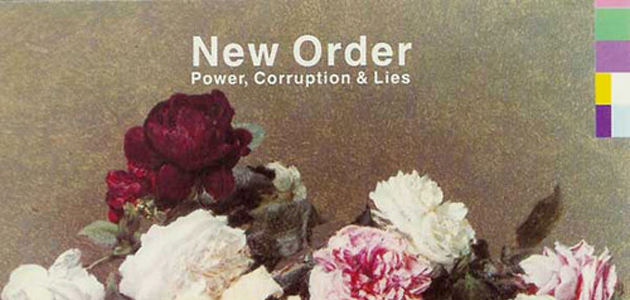 I was two years old when New Order released Power, Corruption & Lies, but it’s one of those musical moments that makes me wish I’d been around to appreciate it. Ian Curtis, frontman of Joy Division, had killed himself three short years earlier and the remaining members had regrouped to form New Order. Their first album under the new moniker had underwhelmed, and so the 1983 follow-up really took punters and critics alike by surprise. It was a sleeper hit whose cult following ultimately became widespread, mainstream success.
I was two years old when New Order released Power, Corruption & Lies, but it’s one of those musical moments that makes me wish I’d been around to appreciate it. Ian Curtis, frontman of Joy Division, had killed himself three short years earlier and the remaining members had regrouped to form New Order. Their first album under the new moniker had underwhelmed, and so the 1983 follow-up really took punters and critics alike by surprise. It was a sleeper hit whose cult following ultimately became widespread, mainstream success.
Its effortless blending of wistful guitars and sultry vocals with cutting-edge synth and electronic drum sequencing still bleeds emotive musicality some thirty years later, and harks back to a time when computer music could really only be played, as in, by musicians, long before the loop became king and every kid with a laptop could make music. Not to be cynical – I’m one of those kids, definitely, and New Order is right up there with Nine Inch Nails and Simon Posford to remind me that there’s so, so much more to learn.
It’s in the approach. The whole idea of combining disco with post-punk is just plain counterintuitive, and to call it a bold step is something of an understatement. Weaving a plaintive trail between bleakness and revelry, New Order had not only birthed a new sound, but had given voice to a youth crushed by Thatcher’s shadow and just bursting to find something to celebrate.
It’s in the technique, too. Unlike Joy Division’s desolate post-punk, PC&L introduced a healthy dose of Giorgio Moroder-style, four-to-the-floor beats and big wet basslines that are, even now, instantly recognisable. From the reverb on the snare in Lonesome Tonight to the head-bopping interplay of bassline and arpeggiate synths in Your Silent Face; from the mesmerising repetition of Ultraviolence to the clipped vocal snatches in 586, PC&L presaged – or channeled – a goldmine of dancefloor sounds that the rest of us mortals still haven’t exhausted.
The synth sounds themselves might sound a bit Axle F by now (although 80s revivalists are getting a whole new kick out of it now), but that’s beside the point – PC&L is a classic example of the magic that can happen when talented musicians concentrate on using new technologies to express themselves, rather than on trying to fit into the world around them. It would be a travesty, I know, but I’d love to hear this album with the synth parts updated – even without the pedigree, I’m willing to bet it would sell like crazy. Every one of the songs stands alone as a finely-crafted story, and there’s no hint of a trade-off of innovation for gimmickry. Add that to a genuinely cohesive musical direction and it’s no wonder that three decades later, here we are discussing this as one of the seminal albums of the 80s.




